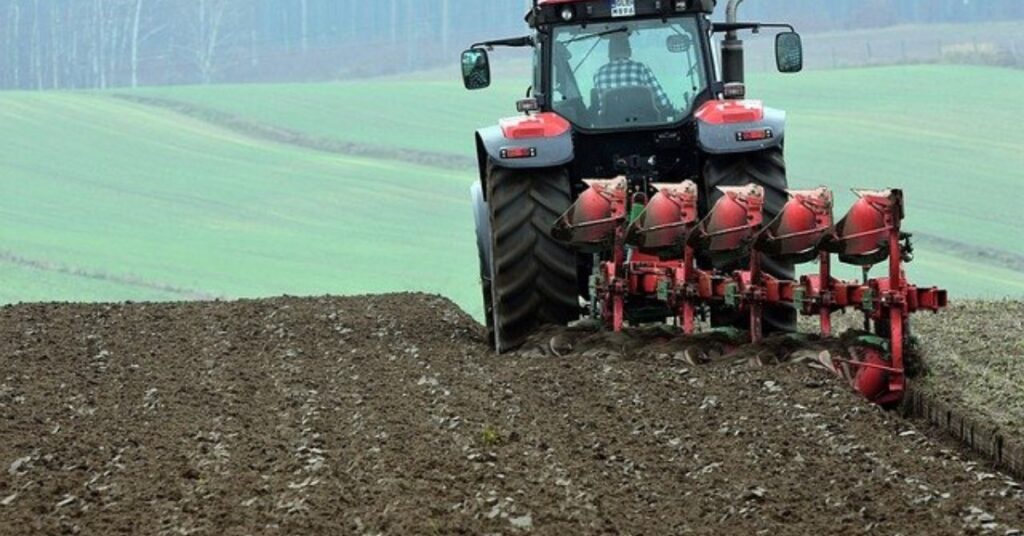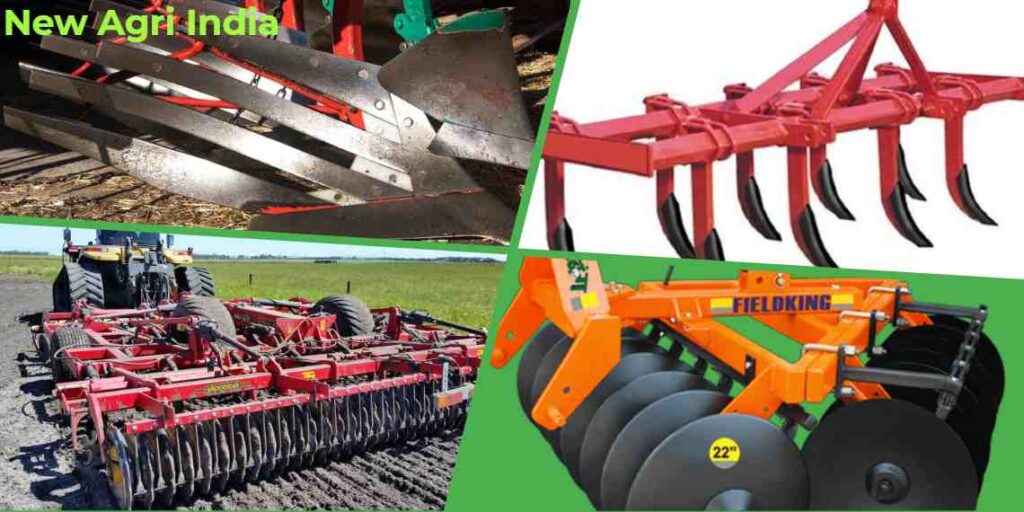What is tillage or soil tillage?
1) “Tillage or soil tillage is the method of preparing the land for growing crops, by which all favorable conditions are created for the growth of plants in the soil”.
2) All the agricultural activities done to prepare the land for sowing seeds and to keep the soil weed-free and properly air-circulated in order to provide maximum facilities for crop growth, are called tillage or soil tillage.
Types of tillage
Tillage includes ploughing the fields, harrowing, cultivating, rolling, leveling the land and hoeing and weeding etc. On the basis of these activities, tillage is divided into two parts.
Primary tillage
All the agricultural activities done before sowing seeds and germination in the field are called Primary tillage, it includes ploughing, rolling, leveling the soil, and adding manure etc.
Objectives of primary tillage
The following are the objectives of primary tillage-
- To increase the water holding capacity of the soil and conserve moisture.
- To increase air circulation in the soil.
- To prevent soil erosion.
- To eliminate crop weeds.
- To make the soil crumbly.
- To kill harmful insects.
- To adding organic matter to the soil.
Secondary tillage
All the agricultural activities after the sowing of seeds in the field are comes under secondary tillage, it includes mainly weeding and hoeing, earthing up and mixing of fertilizers etc.
Objectives of secondary tillage
The following are the objectives of secondary tillage-
Disadvantages of Tillage
- To eliminate crop weeds.
- Removal of unnecessary plants to keep the number and spacing of plants fixed.
- Preparing a barrier layer to conserve soil moisture and prevent moisture from evaporation etc.
Excessive tillage can cause the following disadvantages-
- Soil erosion- Due to repeated ploughing, the soil particles separate from each other and the soil becomes pulverized, due to which the soil particles are easily moved from one place to another by wind and water. Hence the beneficial soil of the upper surface gets destroyed.
- Oxidation of organic matter- Most of the loss due to repeated ploughing is of organic matter present in the land. These organic matter get oxidised and destroyed when exposed to air.
- Increase the farming cost- Due to excessive tillage, the cost of cultivation increases, which reduces the net profit.

Zero tillage
Sowing of a crop, without ploughing in the residues of the previous crop, is called Zero Tillage. This method is suitable where weed control is done by chemical method.
Minimum tillage
The least ploughing of the land required for crop production is called minimum tillage. The main aim of the minimum tillage is to reduce the cost of crop production.
Optimum tillage
The number of ploughing which helps in getting maximum net profit from a crop is called optimum tillage.
Conventional tillage
Whatever primary and secondary tillage operations are done in the preparation of seed bed, it is called conventional tillage.
Combined tillage
In order to control or reduce the number of tillage in the field, sometimes two works i.e. two instruments are used together, this is called combined tillage. For example- rolling along with ploughing.
Conservation tillage
Preparing the land for the next crop by maintaining the surface of the land in its natural form and leaving the residues of the previous crop on the surface of the land is called conservation land refining. Due to this, the soil erosion caused by wind and water is controlled and the “Run off” is also reduced.
Mulch tillage
Such ploughing of the land, in which the residues or mulching material is left on the surface of the land, is called mulch tillage.
Oriented tillage
Ploughing according to the specific paths or directions, keeping in mind the sunlight, wind direction, previous tillage activities and the base lines of the field, is called Oriented tillage.
Rotary tillage
In Rotary tillage, the soil is cut in a circular manner and the land is mixed.
Blind Hoeing
Hoeing before a crop emerge is known as blind hoeing. Generally blind hoeing is done in sugarcane. Sometimes in order to increase the germination percentage in maize, jowar and wheat etc., blind hoeing is also done to break the upper crust which is formed due to rain.
Reduced tillage
A tillage system in which the primary tillage operation is performed in conjunction with special planting procedure in order to reduce or eliminate secondary tillage operations.
Subsoiling
Breaking the compact subsoils without inverting them with the special narrow cultivator, showel or chisel at depth- usually from 30-60 cm from the surface.
Strip tillage
A tillage system in which only isolated bands of soil are tilled.
Pulverization
An operation of mechanically turning down of upper surface soil or materials by means of tools or tillage implements.
Broad Bed and Furrow (B.B.F.) system
A Land management system for successful crop production in vertisols (heavy black soil) by providing better broad beds (about 92-100 cm wide) and furrow (25-30 cm. wide).
How helpful was this post for you, tell me in the comment box and you can also give us your advice, your comment and advice are very important for us.
Thank you..!
